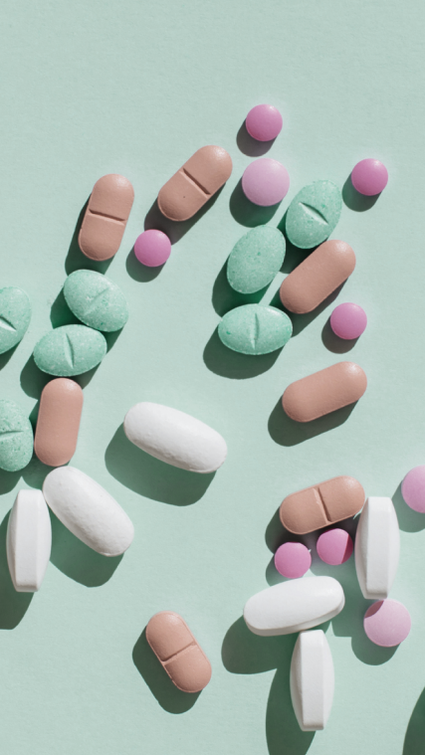“An estimated 2 billion people do not have access to essential medicines.”
Marijn Verhoef,
Access to Medicine Foundation

Media
For billions of people around the world, the basic building blocks of good health are still out of reach. From nutritious foods to common medications, better access to the little things could make a big difference.
In Sierra Leone, Chad and South Sudan, around one in 90 pregnancies leads to the death of the mother. The maternal mortality risk for a woman in the E.U., by comparison, is 0.006 percent – 190 times lower. What’s behind this huge difference? In Europe, women are likely to be healthier and better nourished during their pregnancies and have access to superior healthcare – 98 percent of births are attended by skilled healthcare staff, and antibiotics and blood-clotting drugs are available to treat complications quickly and safely.
“It seems that poverty is the mother of inequality in health,” says Mohsen Naghavi, Professor of Health Metric Science at the Institute for Health Metrics and Evaluation (IHME) at the University of Washington. “Low and middleincome countries experience worse health outcomes than high income countries: the life expectancy is 34 years lower, the under-5 mortality around 100 times higher, and deaths attributable to antimicrobial resistance (AMR) are 12 times higher.”
“An estimated 2 billion people do not have access to essential medicines and vaccines,” says Marijn Verhoef, Director of Operations and Research at the Access to Medicine Foundation. “Research from five or six years ago suggested that around 6 million people die every year from treatable infections, because they don’t have access to antibiotics. More recent research has shown that sub-Saharan Africa is the region that has been hardest hit by the rising incidence of drug-resistant infections.”
The true impact of limited access to medicines and health services may be even more severe, adds Verhoef, since much of the data used to create today’s estimates was collected before the COVID- 19 crisis. “We know that the pandemic had a negative impact on health systems almost everywhere in the world,” he says.
Like any big global challenge, the underlying causes of unequal access to medicines are complex. Affordability is a major issue, says Verhoef, especially in countries where many patients must pay for healthcare from their own pockets. “Sixty percent of households in lowincome countries, 33 percent of households in lower middle-income countries and even 25 percent in upper middle-income countries cannot afford four commonly used cardiovascular medicines sold in private pharmacies,” he says. “And 100 million people are pushed into extreme poverty every year by the cost of essential healthcare.”
“An estimated 2 billion people do not have access to essential medicines.”
Marijn Verhoef,
Access to Medicine Foundation
Then there’s the supply chain. For a drug to be available to end users, its producer must obtain approval from local regulatory authorities, must decide on a pricing strategy, and must establish a supply chain to manufacture and distribute the product in the region.
Each of those steps is a potential weak point, says Verhoef. Medicine distribution networks might fail to reach local populations, especially those in remote and rural areas, or might be vulnerable to theft and corruption. Supply chains can also be affected by manufacturing shortages or policy changes. “In sub-Saharan Africa, 99 percent of the medicines used areproduced overseas,” he says, “During the pandemic, some of the producing countries that supply those markets took action to restrict exports, in order to ensure supply for their own citizens.”
There’s also the risk that pharmaceutical companies see supplying low and middle-income countries as too much work for too little gain. Ensuring that they don’t ignore those millions of poorer patients is the mission of the Access to Medicine Foundation. Since 2008, the Netherlandsbased organization has evaluated 20 of the world’s largest pharma players on their efforts to address current and emerging medical needs in these regions. It publishes its findings in a biennial Access to Medicine Index.
The index rates pharma players on several dimensions, including whether they are developing products that address the key unmet medical needs of low and middle-income countries, whether launch plans for new medicines include these regions, and how companies support product delivery within them.
That scrutiny seems to be having an effect. For example, the latest Index, published in 2022, shows that all 20 companies analyzed now have an access-to-medicine strategy, compared to just eight in 2010. And 77 percent of latestage R&D projects have an associated access plan. There’s still much work to do, however. Access plans for new medicines tend to focus on a relatively small number of regions, with companies favoring middle-income regions over the poorest. And drug-makers’ R&D pipelines are still skewed toward diseases that affect rich-world patients the most.
Preventing or curing disease doesn’t always require a pill or a jab. A bad diet is linked to poor health all over the world, whether that’s rising levels of obesity or chronic malnutrition. Like so many other health outcomes, however, the issue is especially prevalent in lower-income communities, where people struggle to access or afford a nutrient-rich, varied diet.
You don’t have to be hungry to suffer from malnutrition. The World Health Organization estimates that half of all preschool aged children, and an astonishing two-thirds of women of reproductive age, have diets that leave them deficient in micronutrients: the 27 vitamins and minerals the body requires, sometimes in tiny quantities, to function properly.
Micronutrient deficiencies are linked with a wide range of health problems, from weakened immune systems and diminished physical capacity to blindness and cognitive impairment. The prevalence of specific deficiencies depends on the characteristics of local diets, but shortages of folate (vitamin B9), iron, vitamin A, and zinc are paricularly common worldwide.
Vitamin A is required for normal vision and the function of the immune system, among other things.
BASF is a major supplier of vitamin A and has been supporting food fortification projects in about 40 countries for the last 20 years.
Vitamin A is often added to vegetable oils, flour and sugar.
One way to improve the availability of micronutrients is by adding them to the staple foods people already eat. This approach has found favor with public health specialists, because it is a cost-effective way to deliver benefits at a large scale. Common targets for food fortification programs include salt, cooking oils, flour, milk and sugar.
Mariam Al-Hazaa, is Business Development Manager at Al-Hazaa Investment Group, which runs a network of 12 flour mills in Jordan and other countries in the region. In response to high levels of iron deficiency – anemia – in the population, the Jordanian government has operated a country-wide flour fortification program since 2002. The program focuses on the Mowahad wheat flour used to make a flatbread that is a staple in the region. Beginning with the addition of iron and folate to the flour, it has been extended over time to include seven additional vitamins and zinc. The government supplies millers like Al-Hazaa with the micronutrients as a premix, which they blend with the flour during production.
“We need innovative solutions to improve nutrition.”
Mariam Al-Hazaa,
Al-Hazaa Group
As awareness of the benefits of good nutrition increases among its customers, Al-Hazaa Group has extended its fortification activities to other products. “In addition to our participation in the government program, we also produce a fortified general purpose flour for consumers,” says Mariam Al-Hazaa. The company has also worked with commercial customers to encourage the adoption of fortified flours in a wider range of products.
That process hasn’t always been straightforward, she says. “Fortified flour needs to be stored in controlled conditions to preserve the micronutrients, and the addition of the premix can affect the color, texture and even the smell of the finished product.” Mariam Al-Hazaa suggests that the broader adoption of fortified flour will require attention to the formulation and quality of nutrient premixes, and will require both millers and end users to adapt their processes. Al-Hazaa Group is a founding member of Millers for Nutrition, an industry-led coalition that aims to make fortification of staple foods easier and more rewarding for millers. As founding partner, BASF provides technical expertise and mobile test kits to support millers to achieve fortification excellence.
In Jordan, the prevalence of iron deficiency in children halved in the decade following the launch of the country-wide flour-fortification program. Wider global efforts to rectify health inequalities are making progress too. Yet the gaps in health outcomes remain wide and, in many areas, improvement has slowed in recent years. Closing those gaps will require sustained effort and investment by governments, industry and NGOs. As the examples here show, it will take a little ingenuity too.

